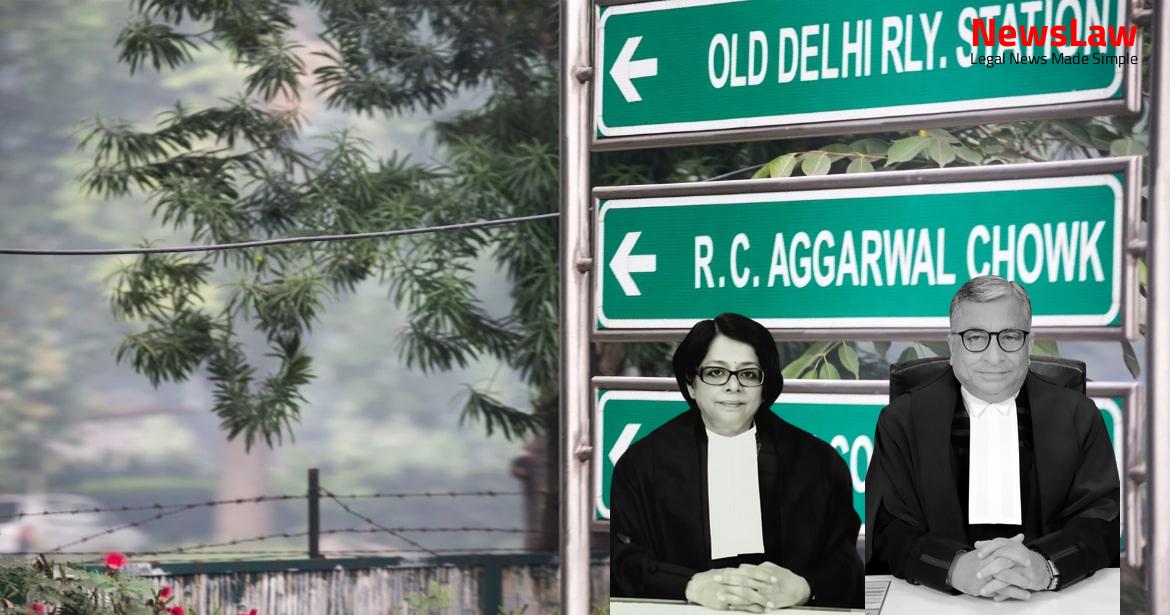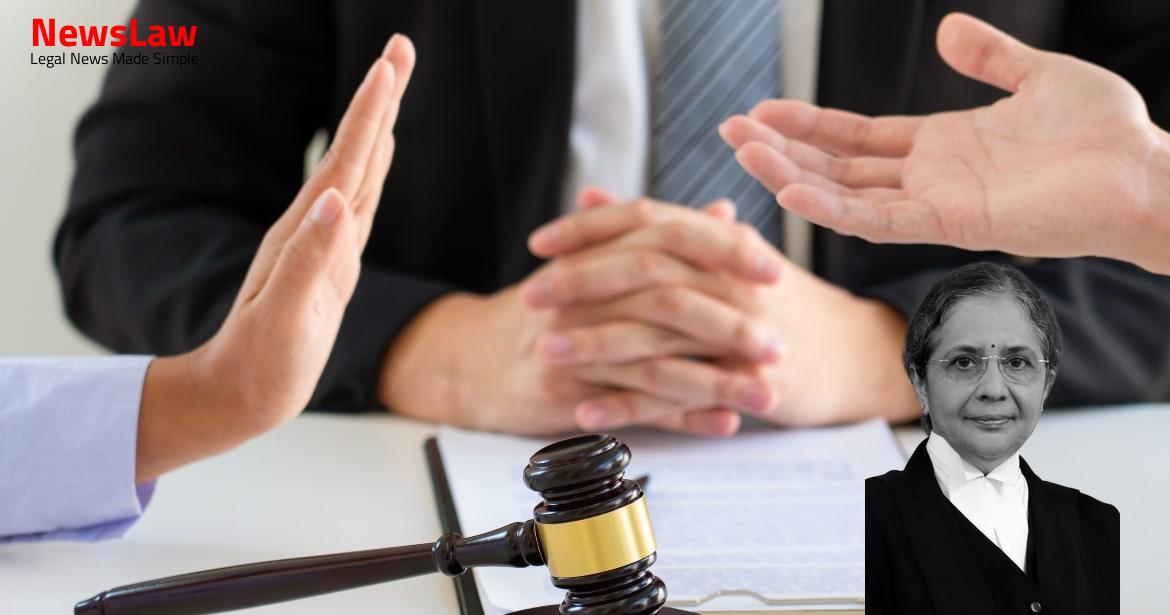Discover the recent Supreme Court judgment on the case concerning membership and liability in an unlawful assembly. The decision upholds the conviction of the respondents involved in the matter, shedding light on crucial legal principles. Stay informed about the implications of this significant ruling by reading further.
Facts
- Accused/appellants entered the house armed with weapons like axe, Ballam, and lathi.
- Two accused, Khushiram and Himmu @ Hemchand, inflicted fatal injuries on the deceased with an axe.
- Other accused were armed with different weapons and faced allegations of exhortation.
- Medical evidence presented by PW2-Dr. R.K. Bhardwaj through the post-mortem report.
- The Trial Court concluded that all five accused were members of an unlawful assembly with the common object of causing the death of the deceased.
- The Trial Court sentenced them to life imprisonment under Section 302 read with Section 149 IPC.
- Accused Himmu @ Hemchand and Khushiram were armed with sharp cutting weapons and inflicted fatal blows on the deceased.
- The High Court found that an unlawful assembly member can be held liable for the offense committed by another if they had knowledge of the act.
- The High Court directed one accused to surrender for the remaining jail sentence.
- Three accused were armed with lathis and Ballam, but no injuries were found to be associated with these weapons.
- The accused were tried in connection with the murder of Balaprasad Pathak in Sessions Trial No.173 of 2005.
Arguments
- Reliance placed on earlier judgment in Baladin vs State of Uttar Pradesh.
- Observation in the earlier judgment cannot be read as laying down a general proposition of law that unless an overt act is proved against a person alleged to be a member of an unlawful assembly, it cannot be said that he is a member of such an unlawful assembly.
Also Read: CRPF Act: Validity of Rule 27 for Compulsory Retirement – Case of Head Constable vs. CRPF
Analysis
- Presence of the respondents in the house of the deceased, armed, and entering around midnight indicated their involvement in the crime.
- The High Court erred in doubting the involvement of the respondents and granting them undeserved benefit.
- Each of the respondents had a clear and specific role in storming into the victim’s house at night.
- The incident did not occur in a public place, ruling out the possibility of the respondents being innocent bystanders.
- Five accused entered the victim’s house, all armed, with two using deadly weapons, showcasing a shared common object.
- Legal significance of passive witnesses in an unlawful assembly was considered in light of the Baladin case.
- No requirement for an individual to commit an overt illegal act to be considered part of an unlawful assembly under Section 149 IPC.
- Established previous enmity and criminal trials against the deceased contributed to the context of the case.
- Applicability of vicarious liability under Section 149 IPC depends on proving membership in an unlawful assembly with a common criminal objective.
- The Trial Court’s decision to find the appellants guilty of murder was deemed correct based on the provided evidence.
- The conviction of three appellants, Killu, Devendra, and Kailash Nayak, armed with lathis and Ballam, under Section 149 of IPC is not proper as they did not inflict any blows.
- Possibility that three persons named among the accused did not cause any injury.
- Testimony of eye witnesses, the wife and son, who were occupants of the same house, was clear and cogent.
- Lack of sufficient evidence to prove guilt under Section 149 of IPC beyond reasonable doubt.
- Mere membership of an unlawful assembly is sufficient for vicarious liability.
- Every member of an unlawful assembly is vicariously liable for acts done in furtherance of the common object.
- Specific overt acts need not be assigned to each accused once membership of an unlawful assembly is established.
- Presence in an unlawful assembly, coupled with an active mind, invokes vicarious liability under Section 149 IPC.
- The case of Masalti vs State of U.P. clarified the principle of vicarious liability in unlawful assemblies.
- Merely being present in an assembly can make a person a member of an unlawful assembly.
- Section 149 of IPC holds every member of an unlawful assembly guilty if an offence is committed in prosecution of the common object
- Proof required against a person in unlawful assembly is that they were one of the persons constituting the assembly and had the common object
- Section 142 states that intentionally joining or continuing in an unlawful assembly makes one a member of it
- An assembly with five or more persons and one or more common objects specified by Section 141 is termed unlawful
- Key expressions in Section 149 include the commission of offence by any member, in prosecution of common object, known to be likely, making every member guilty
- Section 149 makes both offenders and members of the assembly liable for offences, if requirements of the section are met
- Membership in an unlawful assembly is sufficient for vicarious liability
Also Read: DAMEPL vs. DMRC: Curative Petition and Arbitral Award Restoration
Decision
- The acquittal of the respondents by the High Court is set aside and the conviction by the Trial Court is restored.
- The respondents Killu @ Kailash, Devendra, and Kailash Nayak are convicted under Section 302 of IPC and sentenced to life imprisonment.
- The appeal filed by Kailash Nayak is allowed, setting aside the decision of the High Court regarding the said respondents.
- The appeal filed by Himmu @ Hemchand and Khushiram is dismissed.
- The appeal filed by four accused/appellants is partly allowed.
- A copy of the judgment will be sent to the concerned Chief Judicial Magistrate and Police Station for immediate compliance.
- The respondents are required to surrender within three weeks, or the police will arrest them to undergo the sentence.
- The bail bonds of the respondents are cancelled.
Case Title: THE STATE OF MADHYA PRADESH Vs. KILLU @ KAILASH
Case Number: Crl.A. No.-001709-001710 / 2019



